Are you trying to understand the difference between an ionic air purifier vs. a HEPA purifier? I’ll be honest and admit a long time ago I was confused too. One reason is because of misleading product descriptions I had to research and verify.
It seems like there are so many products sold today as air purifiers. And many are falsely described – which makes it even more confusing! My main goal is to answer your questions about both the differences between an ionizer purifier vs. HEPA purifier.
Before spending any money it’s well worth taking a few minutes to find out more what you really need. I want you to get the best for your money and the best product for your needs.
Contents
Infographic – Ionic air purifier vs. HEPA
What does an ionic purifier do?
Examples of two popular and commonly sold ionic (ionizer) air purifiers. Left: O-ion B-1000 purifier and (right) the No products found. Both use charged plates to attract particles from the air which collect in a filter or on plates for later removal. Both also use a fan to move air through the ionizer section of the purifier. Both also have a UV-C light feature to kill germs.
Air ionizers work by processing air moved by a fan using electrically charged plates to charge air molecules. These ions – or charged air molecules – are attracted to plates or electrodes very much like how static electricity works.
How ionizers work
Shown: one of many ionizer designs. In this example (of a design used by better ionizer air purifiers) air is moved by a fan through the first filter. Following this, particles in the air are charged (ionized) and then attracted to metal plates of an opposite charge where they’re captured. A final filter removes some more particles in the air. Note that not all ionizer air purifiers have filters.
Ionizers come in different designs. Not all work the same.
For example, better models have a fan to circulate air in a room and others don’t. In order to purify the air in a room, a product absolutely must actually move the air through it and process it to remove contaminants.
Generally speaking, however, ionic air purifiers use a fan to move air through a series of electrodes and plates. The first plates use an electrical charge to ionize (change the electrical charge of) the airborne particles.
The 2nd stage features other electrodes or plates which have an opposite charge. When the newly charged particles move close to them, they’re attracted to them and bond to them, removing them from the air.
It’s very much like static electricity. For example, think about how pieces of paper, hair, or styrofoam are attracted to your body and clothes when you build up a charge on your carpet.
These contaminants collect on plates or similar type of filter where they’re cleaned off later. Some models feature standard filters as well.
Sometimes ionizers are a feature built into HEPA type purifiers as an added benefit.
One major strength of an ionizer is its ability to destroy airborne illnesses by killing microbes in the air.
Ionizers vs ozone generators
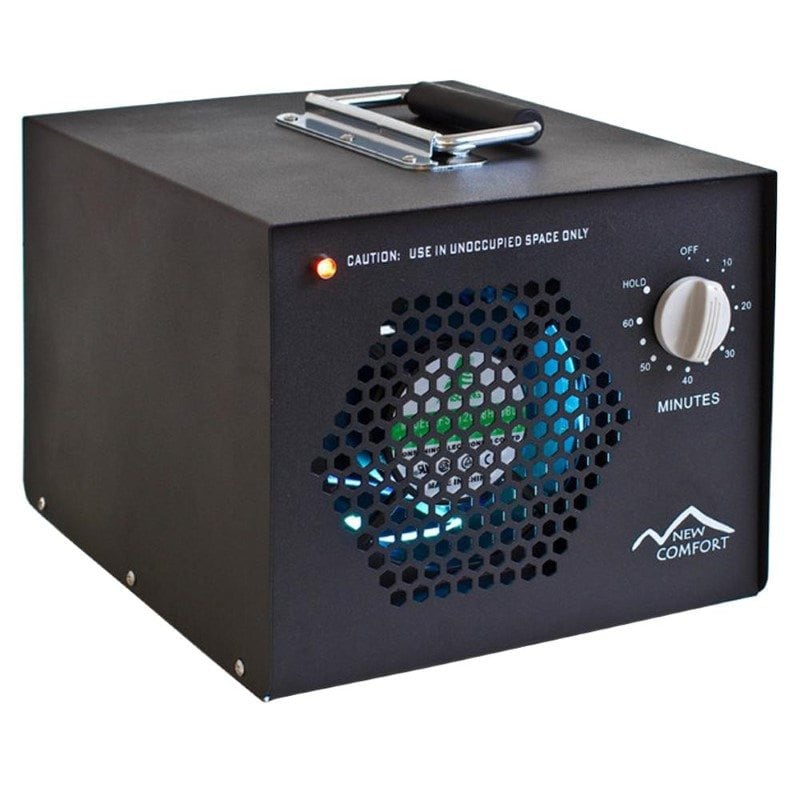
It’s important to cover this topic as unfortunately ionizers are often confused with ozone generators. Companies selling ozone-generating “purifiers” often mislabel them and it simply adds to the confusion.
By nature, ionizers do generate a very small amount of ozone but don’t generally do so at an unsafe or harmful level.
Ozone generators are different from ionizers in that they primarily generate ozone (O3 molecules) by using a high-voltage corona effect to split oxygen molecules in the air which form with other oxygen atoms.
They usually use a fan to blow these molecules into the room, but a lot of them don’t contain internal filters for trapping contaminants. Instead, particles fall to the floor around it.
Why ozone generators are a poor choice
I recommend you avoid these and decide between an ionic purifier and a filter-based (HEPA) purifier. Ozone generators aren’t effective and even if not harmful can irritate your respiratory system.
They’re also a bad choice for people with health issues related to emphysema and other conditions.
What does a HEPA purifier do?
Commonly sold HEPA filter air purifiers like the Levoit LV-H132 are placed in rooms where air quality issues are present. Some of the most common locations are bedrooms and living rooms. They circulate air using fans, moving the air through different filters that trap unwanted elements. You’ll need to replace the filters with new ones once they’re saturated with contaminants.
HEPA air purifiers are designed to circulate air in the room and remove contaminants, dust, allergens, and more by trapping them in filters. Unlike ionic purifiers, HEPA purifiers always use a fan – it’s not possible for a product to work without one. Also, they generally do not affect air molecules using any type of electrostatic charge as ionizers do.
(Note that there are some exceptions which I’ll cover later)
A High-Efficiency Particulate Air (HEPA) filter refers to a particular type of filter designed to meet certain efficiency and air purification quality levels. These filters are made of a very dense fiber-like material.
The HEPA name describes a standard that mandates a filter can remove airborne particles down to 0.3 microns in size. A micron, or micrometer, is 1/1,000,000 of a meter. The efficiency of this type of filter is 99.97%, meaning that for every 10,000 particles flowing into it only about 3 escape.
They’re very effective at cleaning air.
How HEPA purifiers work
HEPA filter-based purifiers don’t produce anything in the air or cause any type of electrostatic charge, unlike ionizers. They work off of a simple principle: using a fan or fans to circulate the air in a room and move it through filters. These filters trap both larger and microscopic particles, odors, chemical vapors, and many common household irritants.
HEPA filter purifiers are pretty simple in principle although many variations with more features exist.
They all share a similar design: A fan (or fans) is used to draw in air and force it through filters that trap odors and contaminants to blow out fresh air. They continue to do so in a circulation pattern to clean the air in a home or room within several hours.
Unlike ionizers, they depend on the fast movement of air and a filter. While ionizers use an electrostatic charge to remove particulates in the air you breathe, these rely on mechanical means.
In other words, instead of “attracting” particles in the air, they block and trap them in filters.
Some add more features
It’s worth noting that some filter-based purifiers may include unique features like an ultraviolet light (UV) germ killing option. Some may even include an ionizer feature themselves! However they still heavily rely primarily on filters to work effectively.
For convenience, some also offer more advanced features like an air quality sensor or auto-off timer. Others today allow smartphone control features.
Filters used in HEPA purifiers

- Pre-filter section
- Activated carbon (charcoal) section
- HEPA filter
The pre-filter is normally attached to an activated carbon filter section. It’s a thin material that traps larger matter like hair and dust. The activated carbon filter is the section that absorbs vapors and odors.
Ionic air purifier vs HEPA purifier comparison
By now you should understand more about how ionic and HEPA purifiers work. You really shouldn’t spend money until considering the pros and cons of each.
In order to make it a bit simpler, I’ve put together a comparison table that highlights the differences between the two along with a few notes. (Some characteristics are often different on a brand & product basis and are not true in all cases).
Ionic vs HEPA comparison table
| TOPIC | IONIC PURIFIER (IONIZER) | HEPA PURIFIER |
|---|---|---|
| Air cleaning process | Charges air particles which are collected on plates or filter. Fan moves air through the purifier. | Cleans air by circulating air. Air is forced through HEPA/pre-/carbon filters, trapping particulates |
| Ozone production | Very small (< 0.05ppm typical) | None |
| Germ killing ability | Low to good, depending on product | None to fair (some products feature germ killing ability) |
| Air flow rate | Low-fair (fan speed often not selectable) | Good-high (adjustable fan speed) |
| Dust cleaning | Poor | Good |
| Cigarette smoke cleaning | Fair-good (particles to 0.01uM in some cases) | Good (limited to particle size to 0.3uM and above) |
| Odor reduction | Poor/moderate | Good (models with carbon filter) |
| Pet dander cleaning | Fair-good | Good |
| Pet hair cleaning | Poor | Good |
| Allergy relief | Fair | Good |
| Filter maintenance | Clean plates/wash filter (reusable) | Replace complete or separate filters, depending on model (ave. 6-8 months life) |
| Average cost | $50-$65+ | $50-$100+ |
Which one should you choose?
Ionic purifiers do have a distinct advantage over HEPA type purifiers: their ability to sanitize the air and greatly reduce airborne germs which cause illnesses. Filter-type purifiers don’t normally have this ability although some like GermGuardian products do have a feature that uses UV-C technology to do so.
Some ionizers like the O-Ion B-1000 in the image above also have this feature, too.
However, when comparing the pros and cons of each, I recommend a quality HEPA-type purifier. They offer a higher rate of airflow for better clean air delivery, they’re good for dust and hair problems, and models with a carbon filter can absorb odors and chemicals in the air.
Another reason is that ionizers are not held to the same standards of performance and demonstrated air cleaning that filter models are.
For example, the Clean Air Delivery Rate (CADR) is laboratory tested and proven testing. It’s a standardized way of demonstrating an air purifier’s cleaning effectiveness. You won’t see that on ionic air purifiers.
When are ionizers a good idea or helpful?
Ionizers are good for light-duty cleaning like needing to freshen a room as well as other less demanding applications.
For pet dander, allergies, bad smoke problems, and others HEPA purifiers are the way to go. Additionally, the faster fan speeds mean air cleaning is more rapid and you have more control over it.
The major downside of HEPA purifiers is needing to buy replacement filters, which on average is about 6-8 months depending on the model. (Note that in some cases carbon filter can be replaced separately, extending the use of the main HEPA filter section).
Hybrid models
Some models use both filters and an ionizer to clean the air. Note that purification effectiveness can vary greatly, so it’s very important to always buy a proven, effective product.
To (unfortunately!) make things more complicated, there are some hybrid models on the market which feature both a filter and a built-in ionizer section as an extra feature.
Primarily, however, you should always shop for a purifier on the basis of proven performance, great reviews, and cleaning ability for your room size. Don’t let marketing tactics mislead you into spending money on something that’s less effective.
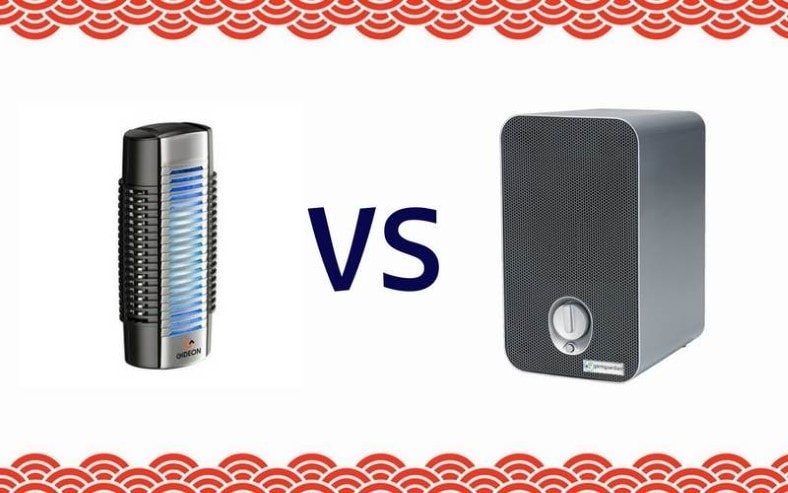
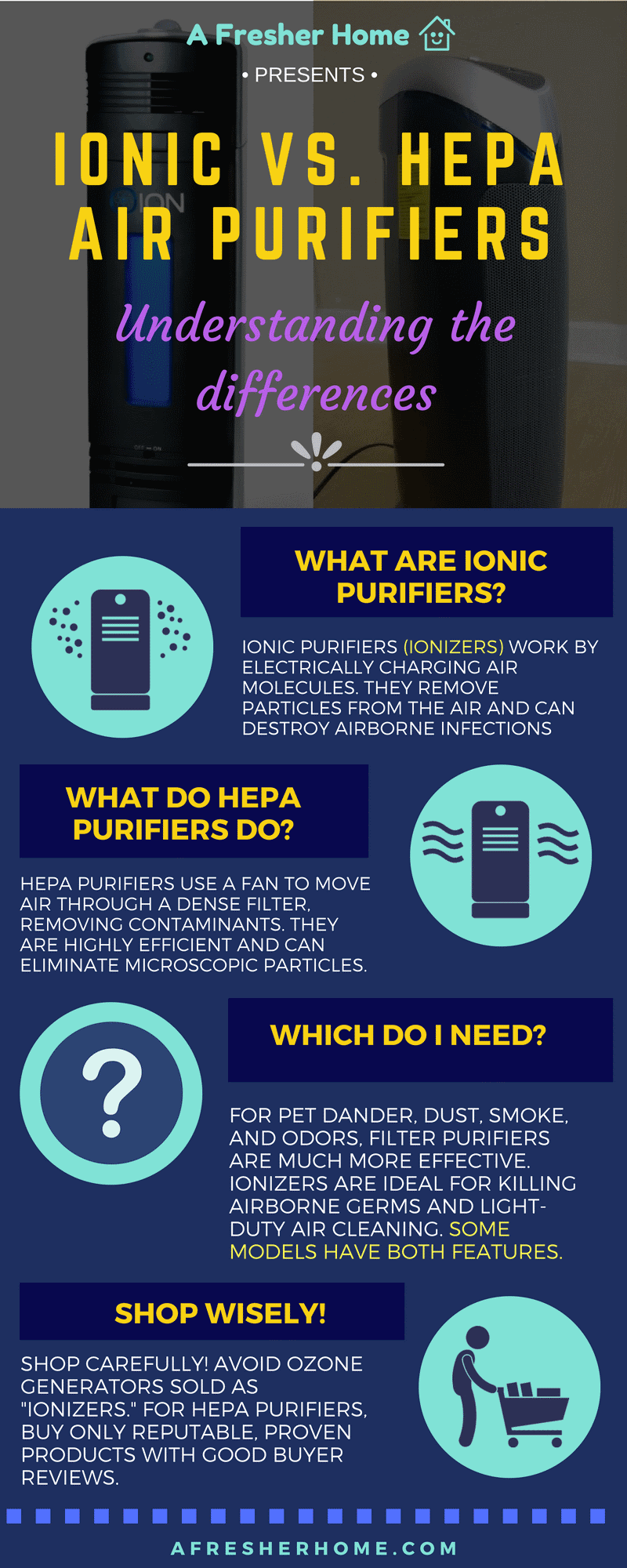

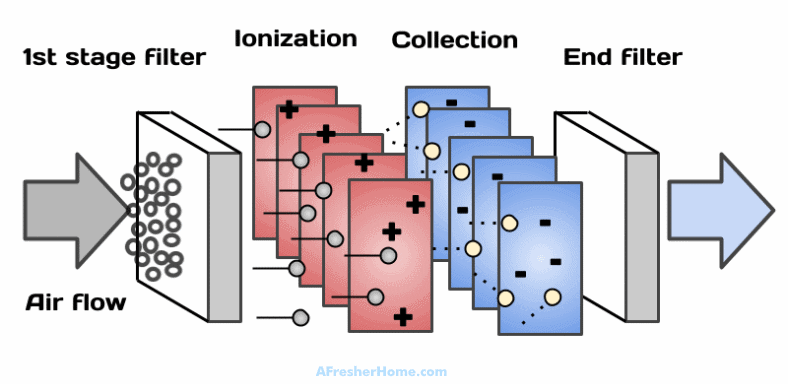
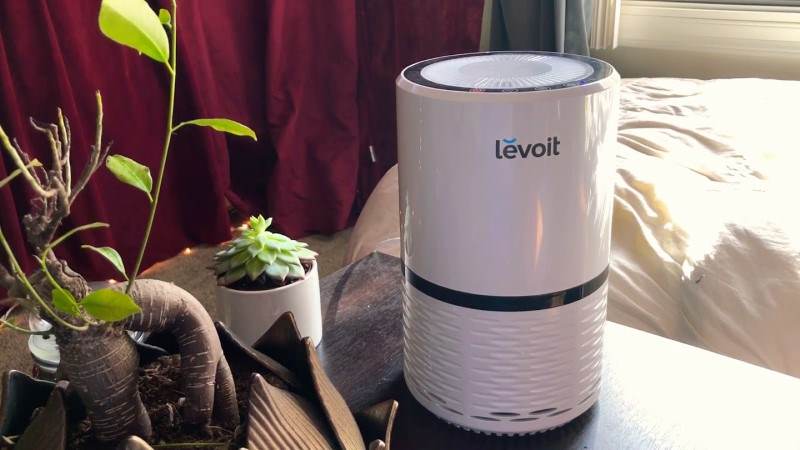
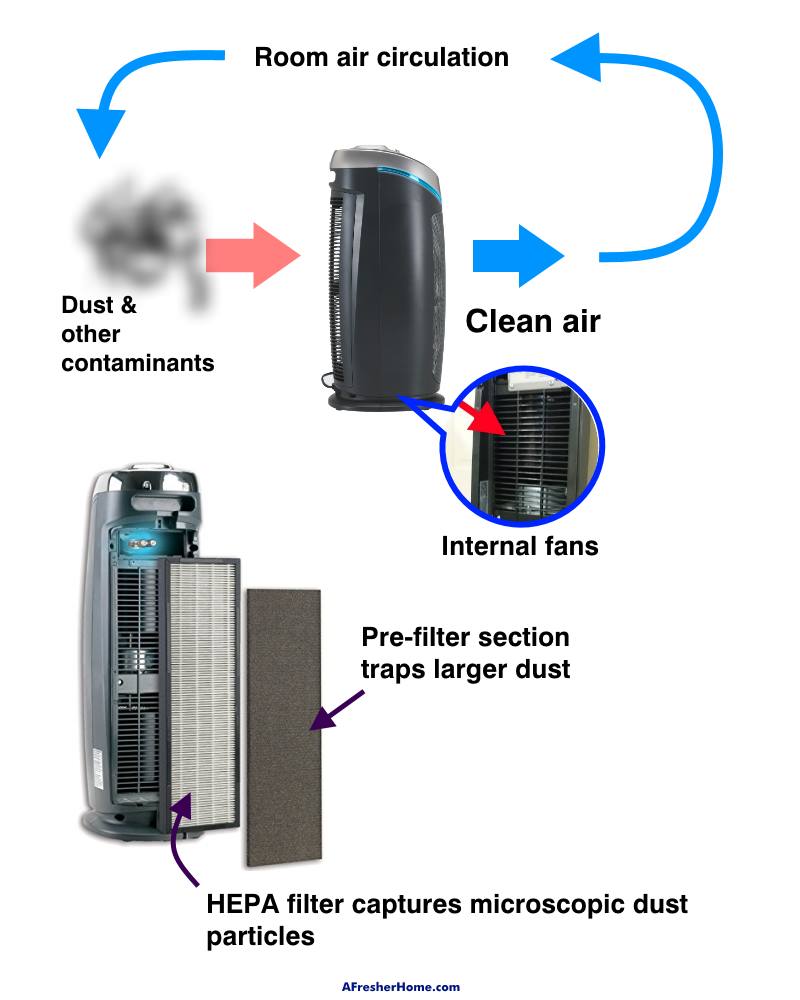

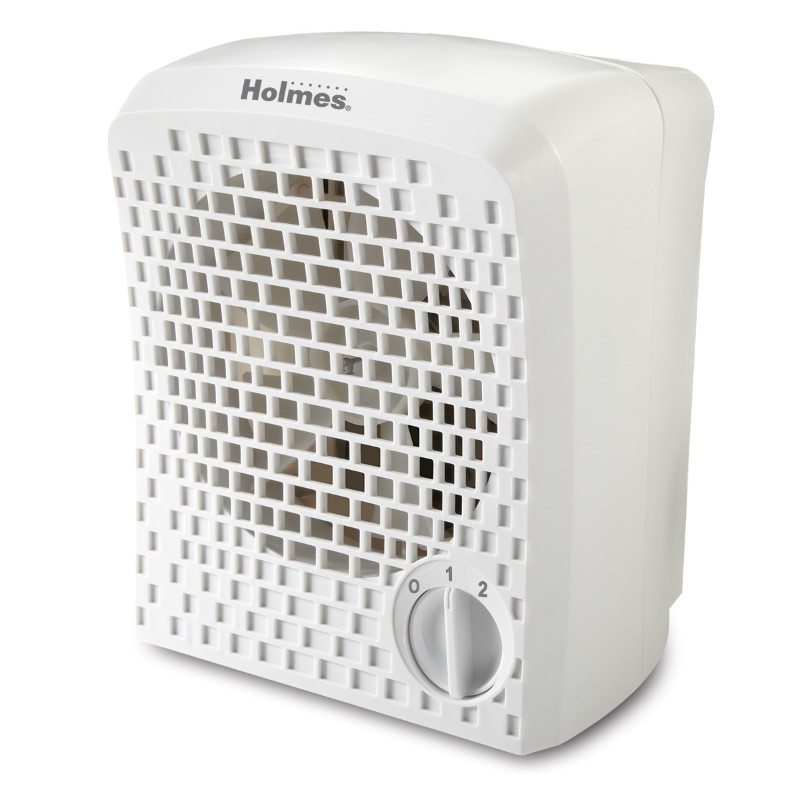
Thank you for clearing up the confusion..? I’m still not sure which is better for my room, but I understand more now Mahalo from Maui.!!!🌿🌺🤙🏼
Hi Lani. Do you mean you’re not sure what particular model is better for your room? Ideally, you’d pick a decent brand name real HEPA purifier that’s recommended for the room size you’ll use it in.
I hope that helps and thank you. :)